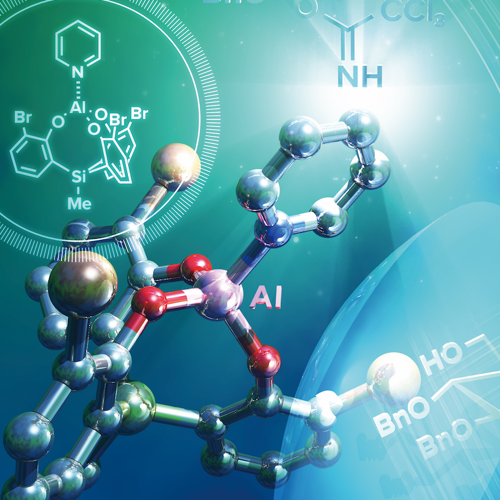Grant-in-Aid for Transformative Research Area A “Digitalization-driven Transformative Organic Synthesis (Digi-TOS)”
Grant-in-Aid for Transformative Research Area A “Digitalization-driven Transformative Organic Synthesis (Digi-TOS)”
By leveraging information science and scrutinizing new principles through experimental science, we aim to further advance the field of synthetic organic chemistry.
By leveraging information science and scrutinizing new principles through experimental science, we aim to further advance the field of synthetic organic chemistry.
With information science as the driving force and experimental science as the means to scrutinize new principles, we aim to further advance the field of synthetic organic chemistry.



Synthetic organic chemistry is a field of study that can be described as a Japanese traditional craft, which has led the world. However, the conventional research approach relying on serendipity and extensive trial and error has its limitations. In this situation, the wave of digital transformation is now sweeping through the field of organic synthesis chemistry.
Currently, the application of artificial intelligence (AI) technology is expected in various fields, and initiatives in fields such as life sciences and materials science are accelerating, yielding significant results. In the field of organic synthesis chemistry, the use of machine learning in optimizing reaction conditions and exploring synthesis routes is being advanced. However, it is still limited, due to issues related to the quantity and quality of data, as well as the lack of sufficient adaptation of current machine learning methods and features to the diversity of organic synthesis.
In this research domain, through exchanges between experts in organic synthesis chemistry and information science, and by adding top runners of machine learning research using neural networks to the team, we plan to launch a "Digital Organic Synthesis" academic transformation domain research, with the aim of transforming, converting, and leading the academic system through interdisciplinary fusion of organic synthesis chemistry and information science.

In cutting-edge organic synthesis research, a vast number of experiments and analyses are still being conducted as the backbone of "experimental science." In recent years, the widespread use of quantum chemical calculations has been made possible by the significant improvement in computer performance, enabling "experimental chemists" themselves to use computational science in their daily research lives, resulting in an improvement in research efficiency.
This research domain aims to create a "digital organic synthesis platform" that thoroughly utilizes informatics (information science) to eliminate the environmental and psychological barriers for organic synthesis chemists to learn machine learning, and to promote a transformation towards a 21st-century research environment where experimental scientists can routinely utilize artificial intelligence (AI) and machine learning (ML) in their research.

To achieve the mission of this research field within the research period, the research will be conducted by a three-group system consisting of A01 team (deepening of reaction control), A02 team (deepening of synthesis methods), and A03 team (deepening of AI methods), and promote interdisciplinary fusion between the A01 and A02 teams of experimental science and the A03 team of information science.
To ensure the smooth implementation of this research field, the general management team will set strategic research goals, develop research plans, and build functional collaboration systems, and establish the following departments to strengthen collaboration between teams and foster young researchers who will lead the next generation:
Collaboration Team: Supports finely detailed collaboration within and between teams and between planned and solicited teams. Also, leads AI education for organic chemists and organic chemistry education for information scientists to provide an environment where interdisciplinary research can be directly learned.
Public Relations Team: Disseminates research achievements widely to researchers both in Japan and overseas. Also, plans and manages annual open symposiums and one international symposium per year.
Young and Female Researchers Development Team: Supports activities for the development of young researchers and female researchers who will lead the next generation of this interdisciplinary fusion research. By increasing the ratio of theory and information in the research environment, which has tended to be biased towards experimentation, and by reforming the way organic chemistry research is conducted, we aim to hire valuable talent who have been unemployed due to various constraints.
Information Management Team: Builds a digital reaction platform that centrally manages data while respecting confidentiality, and also manages and operates it appropriately.
The area representative will promote and operate this research area with the following vision, and advance research through the three-team system below to firmly establish this research area in our country and build an unrivaled position within the five-year research period, allowing no other to follow suit.
This research project involves interdisciplinary collaboration between the A01/02 experimental science teams and the A03 information science team, and the key to their collaboration is a win-win relationship. The A03 team supports the acceleration of A01/02\'s research, while A01/02 team verifies and demonstrates the design and proposals of the A03 team through experimentation, resulting in significant mutual benefits. With the participation of over 50 research groups from both planned and open-call teams, this research structure is necessary to cover the diversity of organic chemistry and the amount of data required for machine learning. The aim of this structure is to \"super-accelerate the creation of innovative reactions and innovative molecules.\"
概要A03班(AI手法の深化)が主として行う研究 ①反応条件最適化、②合成経路探索、③分子設計の3つの自動化システムを開発し、
Advancement of AI Techniques
概要A02班(合成手法の深化)が主として行う研究 フロー反応に用いるデバイスの深化を基盤とする自動合成システムの開発。
Advancement of Synthesis Methods
overviewResearch conducted mainly by Group A01 (Deepening of Reactio
Refinement of reaction control